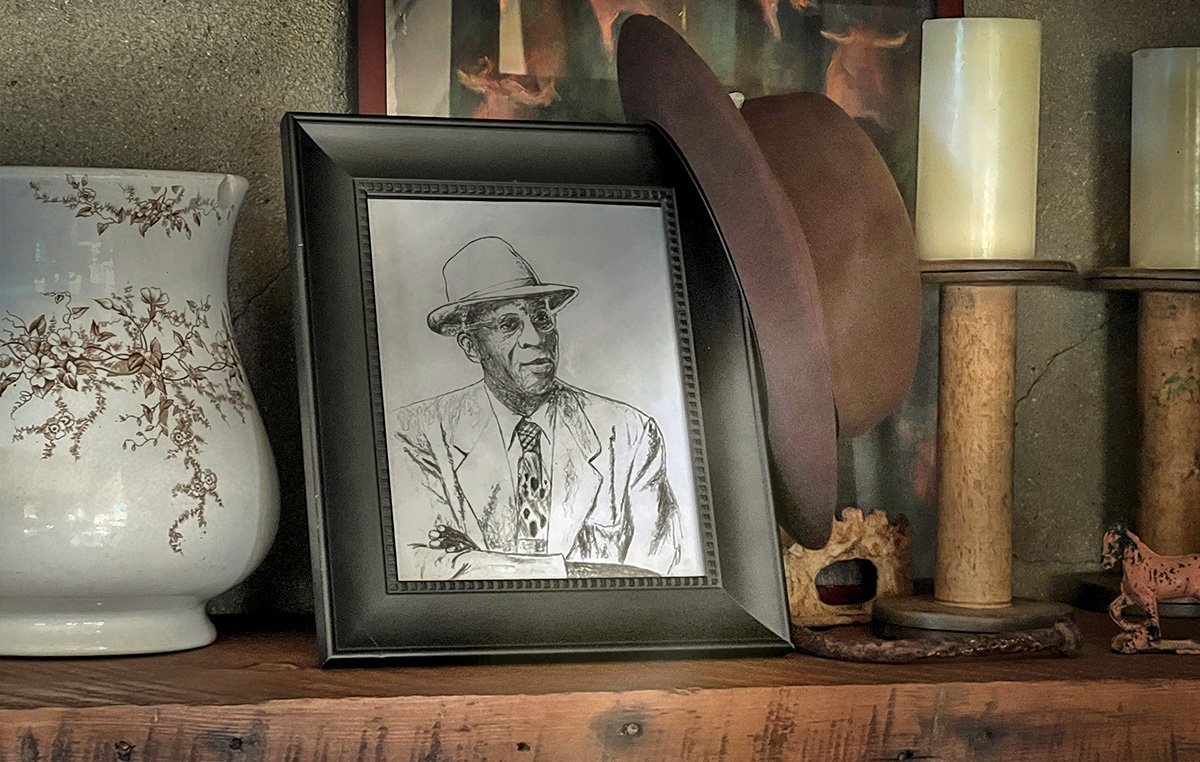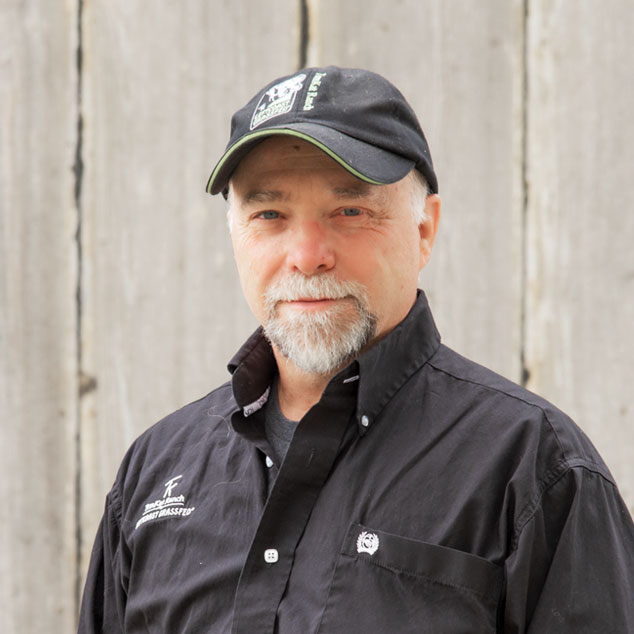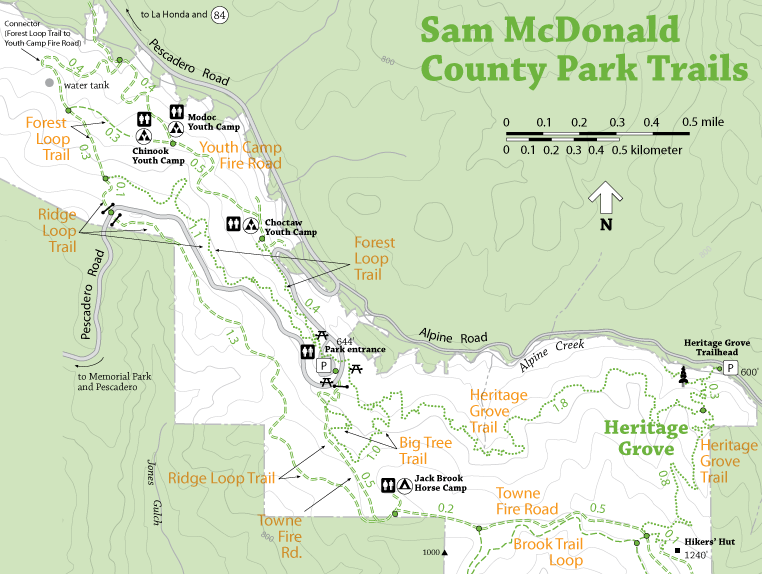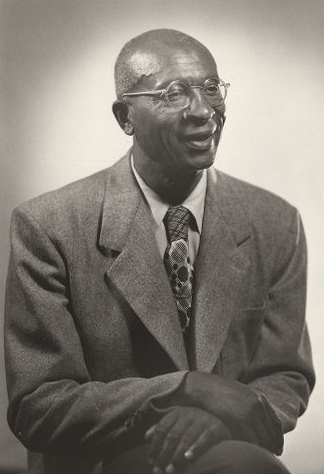In honor of Black History Month, we would like to introduce you to Sam (Emanual) McDonald, a beloved figure in the legacy of Stanford University, a compassionate soul,
Our Sam McDonald Moment

Sketched portrait of Sam McDonald in the Milky Lane Kitchen at TomKat Ranch.
02/28/2024
By: William Milliot
 In honor of Black History Month, we would like to introduce you to Sam (Emanual) McDonald, a beloved figure in the legacy of Stanford University, a compassionate soul, and a cherished individual who holds a special place in our hearts at TomKat Ranch. His renowned kindness towards all and dedication to the preservation of a small part of the redwood forest in the Santa Cruz Mountains serves as an inspiration for our mission. By donating his 430-acre ranch in the Santa Cruz Mountains that would later be part of a more extensive park bearing his name, Sam McDonald Park, he ensured its unspoiled existence would provide a sanctuary for wildlife and a source of wonder for children to experience for generations.
In honor of Black History Month, we would like to introduce you to Sam (Emanual) McDonald, a beloved figure in the legacy of Stanford University, a compassionate soul, and a cherished individual who holds a special place in our hearts at TomKat Ranch. His renowned kindness towards all and dedication to the preservation of a small part of the redwood forest in the Santa Cruz Mountains serves as an inspiration for our mission. By donating his 430-acre ranch in the Santa Cruz Mountains that would later be part of a more extensive park bearing his name, Sam McDonald Park, he ensured its unspoiled existence would provide a sanctuary for wildlife and a source of wonder for children to experience for generations.

As a child, Kat Taylor, owner and founder of TomKat Ranch and TomKat Ranch Educational Foundation, fondly remembers hearing Mr. McDonald’s story and devotion to protecting the redwood forest under his ownership. She likes to call it her “Sam McDonald moment,” the story that planted the seed of inspiration that stayed with her until this day. His story inspired Kat and her partner Tom to purchase TomKat Ranch to ensure its protection from development while serving as a learning laboratory and gathering place to exchange experiences and knowledge.
To put Sam McDonald’s life into perspective, all one has to do is look at the many articles in which he was featured, particularly those that describe his relationship with the Stanford Home for Convalescent Children (now the Lucile Packard Children’s Hospital). For example, a quote about Sam in the Stanford Historical Society’s newsletter, “Winter, 1983 Sandstone & Tile” read as follows:
“Mrs. Ruth Spande Atwood, who came to take charge the year after the Con Home [Stanford Home for Convalescent Children] was founded, used to take [some] of the children to watch Sam light the barbecue fire…Sam at first was too bashful to go inside, but she was able to persuade him to come in, play his concertina, sing, and tell stories.
Later he became a real fixture—he would visit the wards and was a guest of honor at all the holiday celebrations — Christmas, Thanksgiving, his birthday on New Year’s Day, and the Easter egg hunt. He became a sort of godfather to all the children and a good friend of Mrs. Atwood, whom he called “angel mother,” to her great embarrassment.”
In a letter to Sam McDonald, Mrs. Atwood wrote:
“I will always remember the time you came to my office ( in your best bib and tucker ) with Mrs. Almon E. Roth to be taken on your first tour of the Home. You soon lost your bashfulness after seeing how much the children enjoyed your singing for them to the accompaniment of your concertina . . . the annual birthday party the children give for you is such a happy event . . . and the Halloween parties with pumpkins from your garden. How can we ever thank you for the children’s own barbecue area that you have developed and for your large Victory Garden that saw us through the war years … remember the fun we all had when you sat on a box cutting watermelons and we all gathered around enjoying the fruit while the children planted those very seeds for the next crop!”
To which he responded,
“It is indeed a privilege to recall our long years of happy association, and it is with all my heart that I am writing these memoirs with the hope of benefit to accrue to the children of the Stanford Convalescent Home. I thank you, Mrs. Atwood, for helping to make this dream a possibility.”
Sam McDonald was also a ‘regenerative land manager’ well ahead of his time. According to Stanford Magazine’s Meet Stanford’s First Black Administrator, he understood the importance of sheep grazing for maintaining the grass on campus.
“In 1912, to keep the stadium turf short, the university acquired six sheep, a flock that would soon expand into the hundreds. McDonald hired a Scottish shepherd to tend the swelling numbers, but it was McDonald who was apparently seen as their guardian. The Daily dubbed them “Sam’s animated lawn mowers.” The sheep paid for themselves in wool alone.”

Sam McDonald - Courtesy of Special Collections and University Archives, Stanford University
Perhaps most importantly, he left a deep impression on others through his deeds and appreciation for all those around him. His great-niece, Leana Brunson McClain, said, “Her great-uncle started at Stanford as a laborer hauling gravel and left it as a friend to professors, politicians, and school presidents.”
Black History Month provides an opportunity to spotlight the resilience and strength exhibited by so many people of color in spite of systemic racism. We are inspired by these individuals. Despite the daunting barriers and societal pressures, many have forged paths of what could be called ‘regenerative successes’— legacies of positive social impact and progress that resonate far beyond their lifetimes.
Mr. McDonald’s life story is a powerful reminder of the boundless potential for good within us and the positive influence individual actions can have. We hope reflecting on his life prompts you to consider your own “Sam McDonald moment” and that you might draw inspiration from his story to fuel your own journey toward creating a more inclusive and equitable world.
Additional resources:
- Stanford Libraries – SearchWorks
- Peninsula Open Space Trust – A Legacy of Generosity
- KQED – Honoring a Stanford Legend
- Coastside Buzz – The Talented Sam McDonald
- Stanford Historical Society (video) – Sam McDonald: Beloved Stanford Friend, Role Model, and Benefactor
- County of San Mateo – Sam McDonald Park History
- Sequoia Audubon Society (jump to 14:26 minute mark)